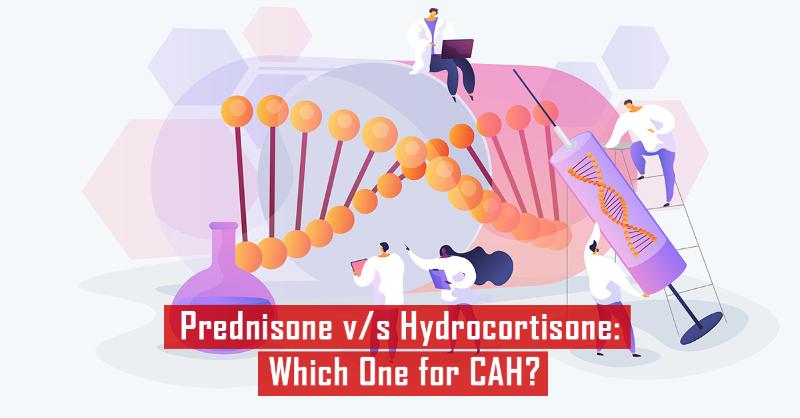Dr V. W. Verlekar
The Long-Known Debate of Prednisone v/s Hydrocortisone for Congenital Adrenal Hyperplasia: Have We Come to an End for This?
ENDOCRINOLOGY
Dr V. W. Verlekar
2/27/20243 min read


Introduction
Congenital Adrenal Hyperplasia (CAH) is a genetic disorder that affects the adrenal glands and results in the insufficient production of certain hormones. One of the primary treatments for CAH involves the use of corticosteroids to replace the deficient hormones. However, there has been an ongoing debate regarding the choice of corticosteroid medication, specifically between prednisone and hydrocortisone. This blog post aims to explore the historical context, current research, and potential future directions of this long-standing debate.
Historical Context
The debate between prednisone and hydrocortisone for the treatment of CAH dates back several decades. Hydrocortisone, a synthetic form of cortisol, has been the traditional choice due to its similarity to the body's natural cortisol production. It is considered the gold standard treatment for CAH and has been widely used for many years.
On the other hand, prednisone, a synthetic corticosteroid with anti-inflammatory properties, has gained attention as an alternative treatment option. It has been suggested that prednisone may offer advantages such as better growth outcomes, lower androgen levels, and improved bone health in individuals with CAH.
Current Research
Several studies have been conducted to compare the efficacy and safety of prednisone and hydrocortisone in the treatment of CAH. One notable study published in the Journal of Clinical Endocrinology and Metabolism in 2009 compared the two medications in children with CAH. The results showed that prednisone was associated with better growth outcomes and lower androgen levels compared to hydrocortisone.
However, it is important to note that these findings are not universally applicable to all individuals with CAH. Each person's response to medication can vary, and treatment decisions should be made on a case-by-case basis in consultation with a healthcare professional.
Considerations for Treatment Choice
When considering the choice between prednisone and hydrocortisone for CAH treatment, several factors should be taken into account:
1. Growth and Development
Growth and development are critical considerations in the treatment of CAH. Prednisone has been associated with improved growth outcomes in some studies, which may be particularly relevant for children with CAH. However, long-term effects on growth and development need further investigation.
2. Androgen Suppression
Androgen excess is a common feature of CAH and can lead to various complications. Prednisone has shown potential in reducing androgen levels more effectively than hydrocortisone in some studies. This may be beneficial in managing the symptoms and long-term complications associated with CAH.
3. Bone Health
Individuals with CAH are at an increased risk of developing osteoporosis due to chronic exposure to high cortisol levels. Prednisone has been suggested to have a positive impact on bone health compared to hydrocortisone. However, further research is needed to fully understand the long-term effects.
4. Adherence and Convenience
Adherence to medication is crucial for effective management of CAH. Factors such as medication dosing frequency and ease of administration can impact adherence. Hydrocortisone is typically administered multiple times a day, while prednisone can be given once daily, which may be more convenient for some individuals.
5. Individual Response
Each person with CAH may respond differently to prednisone or hydrocortisone. It is important to monitor individual response to treatment and adjust medication accordingly. Regular follow-up with a healthcare professional is essential to ensure optimal management of CAH.
Future Directions
The debate between prednisone and hydrocortisone for the treatment of CAH is far from settled. Further research is needed to fully understand the long-term effects, optimal dosing regimens, and individualized treatment approaches. Additionally, the development of new corticosteroid medications with improved efficacy and safety profiles may provide additional options for individuals with CAH in the future.
Conclusion
The debate between prednisone and hydrocortisone for the treatment of Congenital Adrenal Hyperplasia continues to be an ongoing topic of discussion and research. While prednisone has shown potential advantages in terms of growth outcomes, androgen suppression, and bone health, the choice of medication should be based on individual factors and in consultation with a healthcare professional. Further research and advancements in the field will continue to shape the treatment landscape for CAH, ultimately aiming to improve the quality of life for individuals living with this condition.

